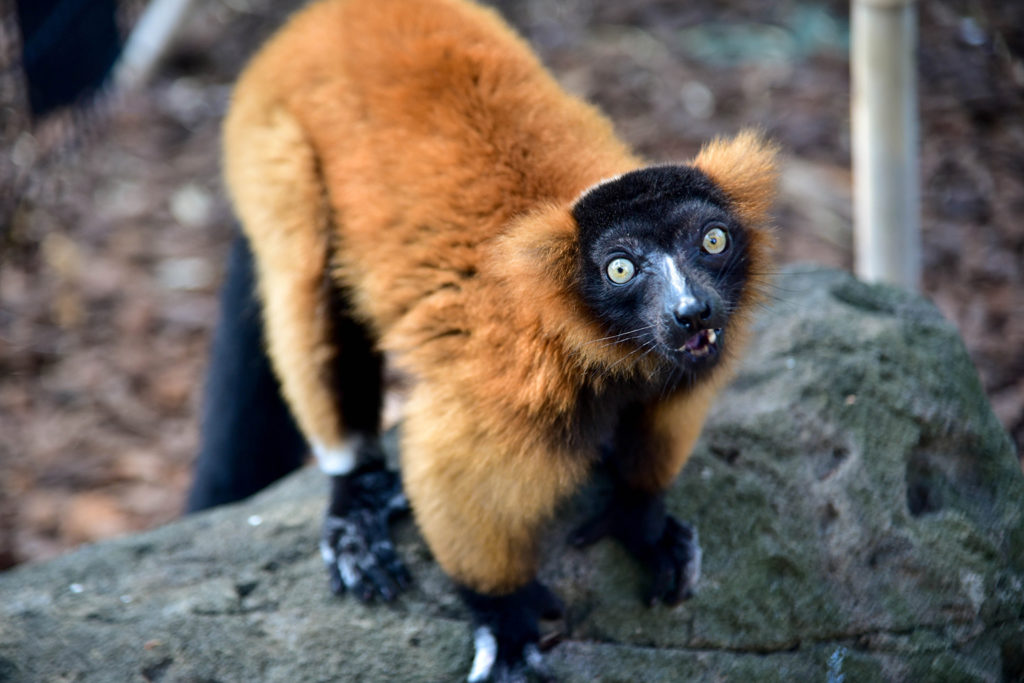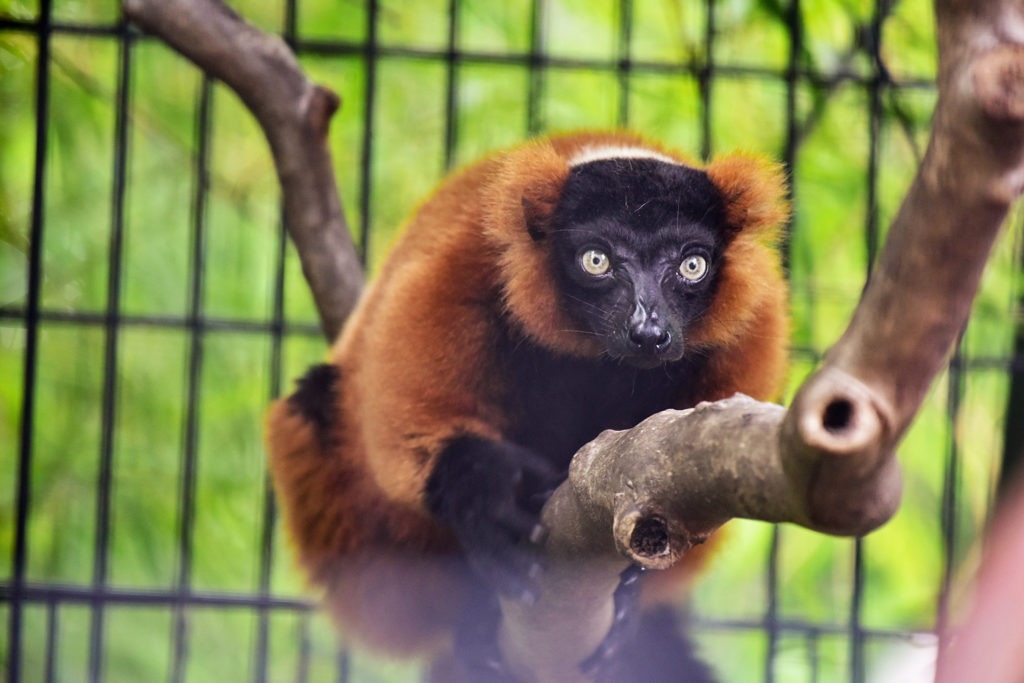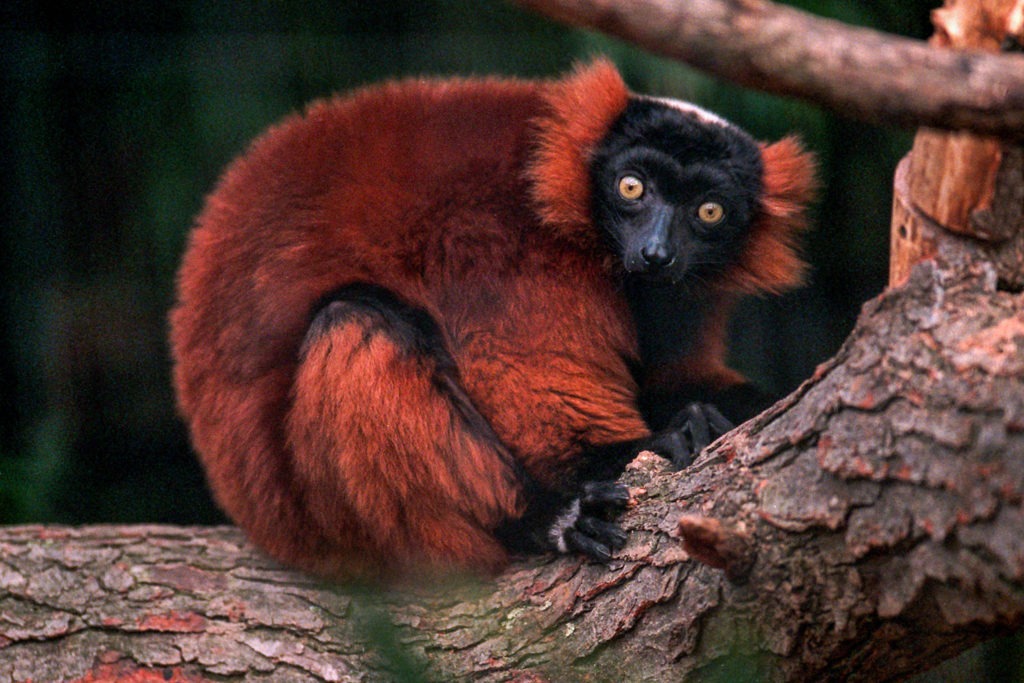Overview
“Where I live”
In the wild, red ruffed lemurs live only in the remote rainforests of northeastern Madagascar.
“How I live there”
Red ruffed lemurs very rarely descend to the ground. They spend almost all of their time in the high treetops. They live in female-dominated family groups averaging in size from 2 to 16 animals. They are active during the day and spend most of their waking hours socializing and eating. One of their most important social rituals – and important to all primates – is grooming. Lemurs groom each other for hygiene reasons, but also to cement social bonds. This particular species of lemur has evolved a tooth comb to help groom its dense and luxuriant fur. The tooth comb is comprised of the six bottom, front teeth, which are long and thin and set close together, resembling the teeth of a comb.
Red ruffed lemurs are frugivorous; they eat mainly fruit, as well as leaves, flowers, and nectar.
“Making my mark”
All lemurs are social and vocal. They use at least 12 different known calls to define territory, communicate with neighboring groups, and alert each other to predators. Some of their calls can be very loud and echo through the rainforest (or the Zoo, as the case may be!)
“What eats me”
Red ruffed lemurs only have a handful of predators to worry about, but these few are significant. They include fossas (large, weasel-like carnivores endemic to Madagascar), raptors, and humans.
Raising Young
Red ruffed lemurs give birth to litters of usually 2-6 offspring after about 100 days in the womb. Females build nests out of twigs in the treetops and this is where the tiny babies stay for their first few weeks of life. After that, they are carried by mouth from site to site and protected by males. They develop rapidly and are as agile and mobile as adults by about four months of age.
Baby lemurs are highly vulnerable during their first few months of life. Many are taken by predators and many die from falling out of trees. It is estimated that 65% of baby lemurs do not survive their first three months.
Conservation
Red ruffed lemurs are critically endangered. Their habitat is disappearing, they are over-hunted by people for food, and they also are trapped for the pet trade. With the creation of Masoala National Park in northeastern Madagascar in 1997, red ruffed lemurs are better protected now, although not those living outside park boundaries.
The Maryland Zoo belongs to the Madagascar Fauna Group, an international consortium of zoos that pools resources and expertise to help conserve Madagascar’s unique wildlife, including lemurs.
Taxonomy
- Kingdom: Animalia
- Phylum: Chordata
- Subphylum: Vertebrata
- Class: Mammalia
- Order: Primates
- Family: Lemuridae
- Genera: Varecia
- Species: variegata rubra





